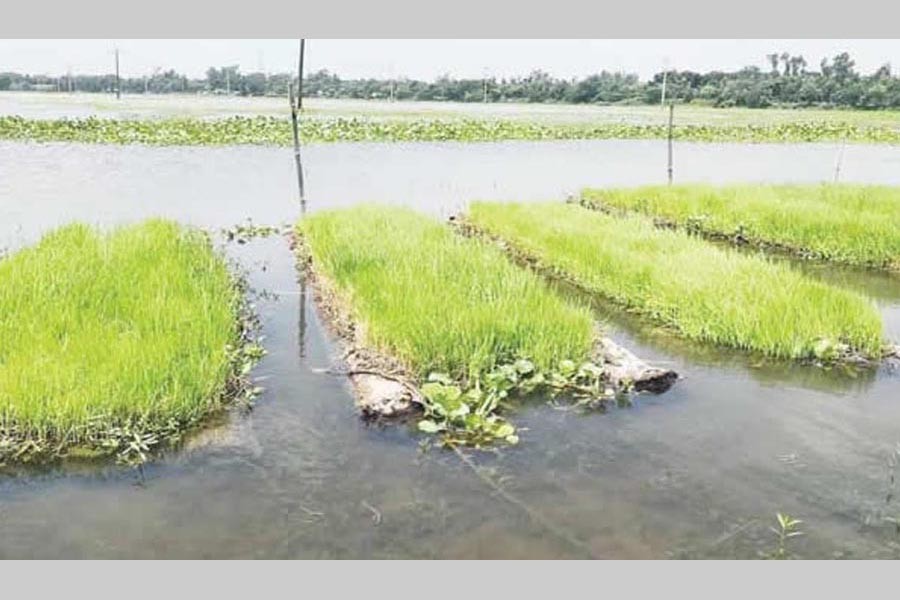
Published :
Updated :

The recent flood that inundated vast tracts of the country, causing extensive damage to human settlements and croplands reminds the nation once again of a universal fact - the people of this deltaic land are consummately resilient. Especially its rural people have hardly bowed down to the onslaughts of natural calamities. As part of their resilience, they have faced disasters heroically and resumed their lives anew by piecing together whatever fallout they were left with. The timely and full use of floating seedbeds in the post-flood times is one of these instances. When flood in the country's northern, northeastern and southwestern parts began washing land-based Aman seedbeds one after another the indomitable farmers started employing a lately renovated solution to seedbed crisis. That they were desperate in their bid was understood. It was because production losses in the BARRI-51 Aman variety would lead to a series of disruptions in terms of yields and food security.
As farmers in many parts of the country had already turned to the floating seedbed technique during small-scale floods, aided by local agricultural officials, it appeared before them as the only remedy. During the raging flood and after, paddy growers in general found their traditional seedbeds washed away. While preparing makeshift floating seedbeds, the intrepid farmers were confident that their artificially grown Aman seedlings will bail them out this time too. What they have to do is transplanting the seedbed-paddy seedlings in their croplands after the floodwater recedes. This was how a large number of paddy growers were able to escape the dreaded crop loss about to strike them.
Modernised chiefly by the field officers at the Department of Agricultural Extension, the making of floating seedbeds follows a simple formula. Prior to its formal introduction, this type of seedbeds has been in use in the flood-prone areas through the ages. In the modern version, shorn of the crude methods, the floating seedbeds are dependent mainly on water hyacinth and other aquatic plants. All a farmer has to do for making a seedbed is give a mud-cover on the layer of the water hyacinths. With the beds prepared, the farmers sprinkle paddy seeds on the floating patches of the 'croplands'. The seedlings grown from the seeds are then shifted to the main paddy fields for transplantation.
In the context of repeated crop losses during large and small monsoon floods, calling the floating seedbeds a revolution is no understatement. Already in many areas of the country, mechanised agricultural practices are set to herald a new era. From tilling to harvesting to threshing, the uses of modern agro-techniques have long been a common spectacle. The re-introduction and rising popularity of the age-old traditional floating seedbeds emerge as a unique addition to the country's agriculture, notwithstanding its being a little anachronistic. The country's agriculture has yet to come completely free of many of its traditional practices. Floating seedbed in an improved form is one of them. It speaks of the fact that the adage 'old is gold' has not lost its relevance fully. A piece of information might make many farmers feel upbeat. The Agriculture Extension Directorate is attaching considerable importance to the floating seedbed project. In order to extend support to the project, it is arranging 'incentive grants' for the farmers after imparting training to them.


 For all latest news, follow The Financial Express Google News channel.
For all latest news, follow The Financial Express Google News channel.